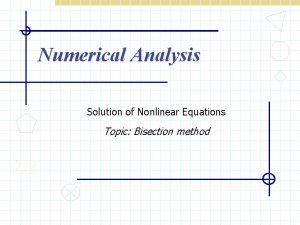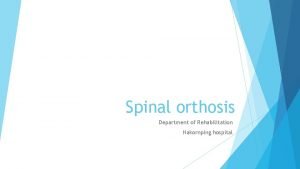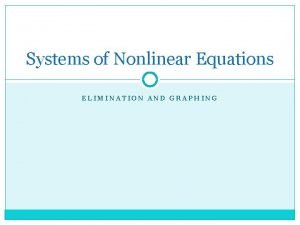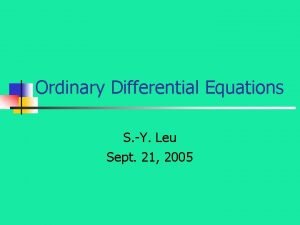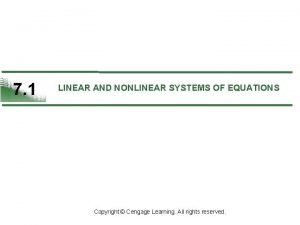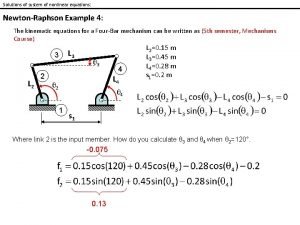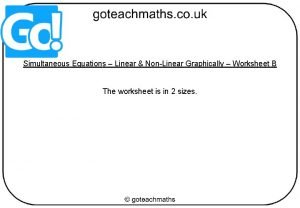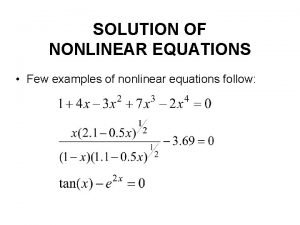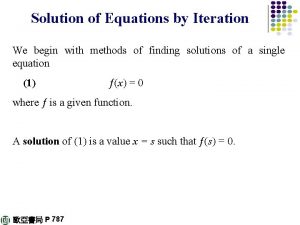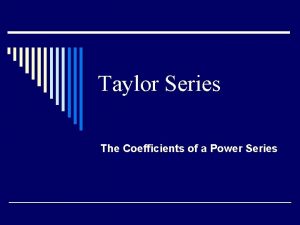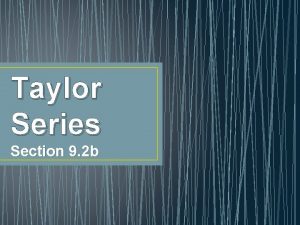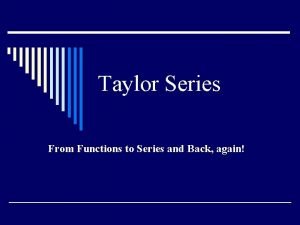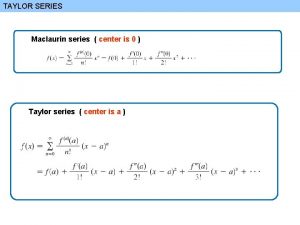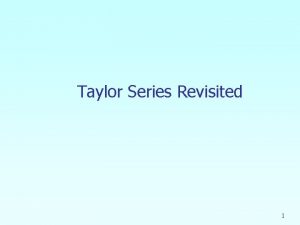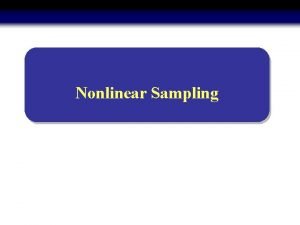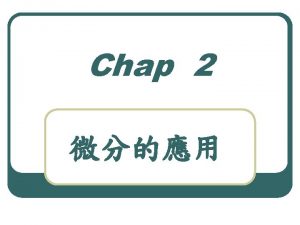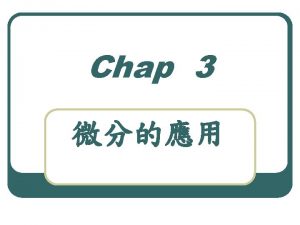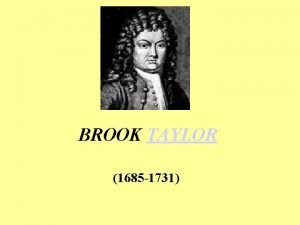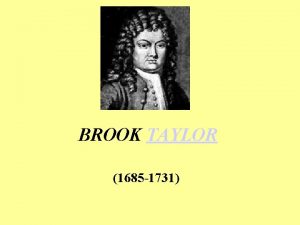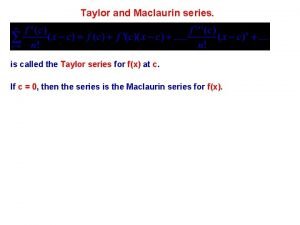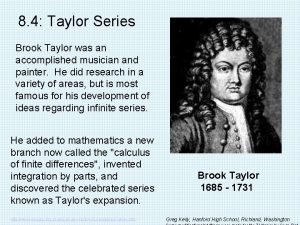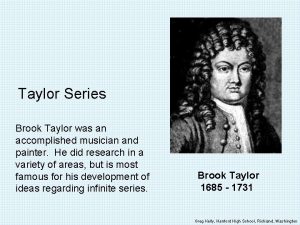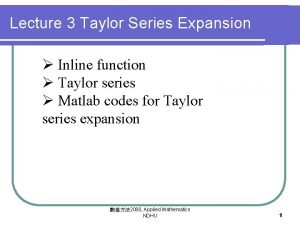Taylor Series SOLUTION OF NONLINEAR EQUATIONS All equations


















- Slides: 18

Taylor Series

SOLUTION OF NON-LINEAR EQUATIONS • All equations used in horizontal adjustment are non-linear. • Solution involves approximating solution using 1'st order Taylor series expansion, and • Then solving system for corrections to approximate solution. • Repeat solving system of linearized equations for corrections until corrections become small. • This process of solving equations is known as: ITERATING

Taylor’s Series Given a function, L = f(x, y)

Taylor’s Series • The series is also non-linear (unknowns are the dx’s, dy’s, and higher order terms) • Therefore, truncate the series after only the first order terms, which makes the equation an approximation • Initial approximations generally need to be reasonably close in order for the solution to converge

Solution • Determine initial approximations (closer is better) • Form the (first order) equations • Solve for corrections, dx and dy • Add corrections to approximations to get improved values • Iterate until the solution converges

Example C. 1 Solve the following pair of non-linear equations. Use initial approximation of 1 (one) for both x and y. First, determine the partial derivatives

Partials

Write the Linearized Equations Simplify

Solve New approximations:

Linearized Equations – Iteration 2 Simplify

Solve – Iteration 2 New approximations:

Iteration 3 Same procedure yields: dx = 0. 00 and dy = -0. 11 This results in new approximations of x = 2. 00 and y = 2. 00 Further iterations are negligible

General Matrix Form • The coefficient matrix formed by the partial derivatives of the functions with respect to the variables is the Jacobian matrix • It can be used directly in a general matrix form

General Form for Example JX = K

Circle Example Determine the equation of a circle that passes through the points (9. 4, 5. 6), (7. 6, 7. 2), and (3. 8, 4. 8). Initial approximations for unknown and circle equation: Center point: (7, 4. 5), Radius: 3 Rearranged Linearizing

Set Up General Matrix Form

Substitute the Values and Solve

Continue Until Converged
 Solution of nonlinear equations by bisection method
Solution of nonlinear equations by bisection method Maclaurin series vs taylor series
Maclaurin series vs taylor series Serie de taylor
Serie de taylor Maclaurin series vs taylor series
Maclaurin series vs taylor series Tls orthosis
Tls orthosis Name
Name Graphing nonlinear equations
Graphing nonlinear equations Nonlinear differential equation
Nonlinear differential equation Linear or nonlinear tables
Linear or nonlinear tables Differences between linear and nonlinear equations
Differences between linear and nonlinear equations Nonlinear systems of equations worksheet
Nonlinear systems of equations worksheet Nonlinear equations
Nonlinear equations Non linear simultaneous equations worksheet
Non linear simultaneous equations worksheet Persamaan linier 1 variabel
Persamaan linier 1 variabel Solution of
Solution of Secant method nonlinear equations
Secant method nonlinear equations Cos x power series
Cos x power series Taylor series about x=0
Taylor series about x=0 Cos taylor series
Cos taylor series
